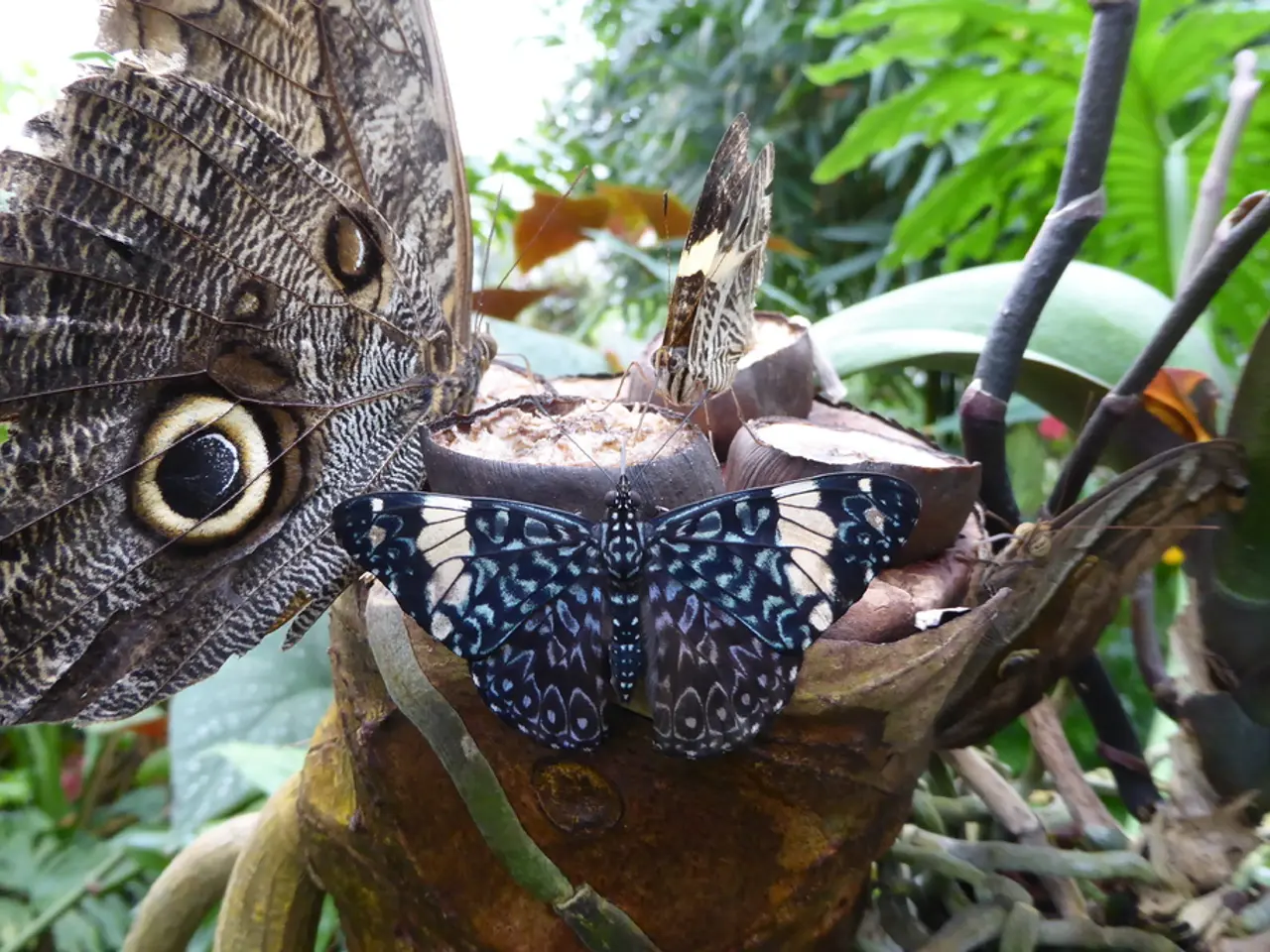Strategies for Drawing Monarch Butterflies: Enhancing Your Garden for Monarchs' Favor
In an effort to create a vibrant and diverse garden, many garden enthusiasts are turning their attention towards attracting the stunning Monarch butterfly. This native North American species, recognized for its black and orange wings and a remarkable migration route of 3,000 miles from Mexico to Canada, can be enticed to visit your garden with the right approach.
The key to attracting Monarch butterflies lies in providing a combination of host plants for their caterpillars and nectar plants for adult butterflies. The primary plant that Monarch caterpillars require is milkweed (Asclepias species), as it is the only plant on which Monarchs lay their eggs and where their larvae eat milkweed leaves.
When it comes to milkweed, it's essential to choose native milkweed species suitable for your area, such as Common Milkweed (Asclepias syriaca), Purple Milkweed (Asclepias purpurascens), Antelope-horns (Asclepias asperula), California Milkweed (Asclepias fascicularis), and Showy Milkweed (Asclepias speciosa)[1].
In addition to milkweed, several nectar-rich flowers attract Monarch butterflies. These include Purple Coneflower (Echinacea purpurea), Liatris (Liatris spicata), Zinnias (Zinnia elegans), Joe-Pye Weed (Eutrochium purpureum), Black-Eyed Susan (Rudbeckia hirta), Goldenrod (Solidago spp.), and Asters (Symphyotrichum spp.)[2]. These plants provide vital nectar sources for adult Monarchs throughout their flight season.
For a well-rounded Monarch-friendly garden, prioritise native milkweed species for egg-laying and caterpillar food, and plant a variety of nectar-producing flowers that bloom at different times to provide continuous food. Include plants like Butterfly Bush (Buddleia) and Salvia, which also attract a diversity of butterflies and pollinators[2][3].
Beyond plants, offering shelter from the storm is another way to provide protection for Monarch butterflies in the garden. This can be achieved by planting tall grass or installing rock piles for hiding places during inclement weather.
To help the Monarch butterfly, gardeners can also attract them to their gardens by providing a water source, such as a small pond, fountain, or bird bath. However, it's crucial to maintain your garden strictly organic to avoid chemicals that harm Monarchs. If buying milkweed starts, ensure the nursery did not use pesticides or fertilizers containing chemicals.
It's important to note that while tropical milkweed can attract Monarchs, it can be harmful to them. Therefore, it's best to avoid this variety.
The Monarch butterfly population has experienced a 90% decline over the last two decades, primarily due to destruction of habitat, use of chemical pesticides, and climate change. By creating Monarch-friendly gardens, gardeners can contribute to the conservation of this beautiful species.
By incorporating native milkweed species such as Common Milkweed, Purple Milkweed, and others into a home-and-garden setting, individuals can support the larval stage of Monarch butterflies. Furthermore, to entice adults, one might consider planting nectar-rich flowers like Purple Coneflower, Liatris, Zinnias, and others from the environmental-science field, promoting a diverse lifestyle within the garden and aiding in the conservation of the Monarch butterfly.




